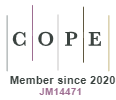Challenges for patent valuation in Brazil: a case study on products / processes for environmental remediation
DOI:
https://doi.org/10.5585/iptec.v9i1.18207Keywords:
Innovation, Patent, Environmental impact, Valuation.Abstract
In the context of the negative changes arising from environmental impacts and the incentive to innovation as an alternative to minimize these impacts, this article aims to analyze two questions: How is patent production in the environmental area, specifically in the theme of remediation? And also, if are these patents reaching the market and/or are these being valued? For this, searches were carried out on the INPI patent bases and available on Orbit, in addition to searching the literature and applying questionnaires. It was verified that there are few patents for environmental remediation in Brazil and still many difficulties for the valuation of patents in general, although 7 methods have been identified. Furthermore, the main challenges are scarcity of publication on the area with details about steps used in practical cases; methods still require adaptations for the valorization of new technologies; lack of training; and specifically for environmentally related patents, including technologies for remediation, the lack of parameters that consider the gains and strategic advantages from the fulfilment of environmental responsibilities.
Downloads
References
Adriano, E., & Antunes, M. T. P. (2017). Proposta para Mensuração de Patentes. Revista de Administração Contemporânea, 21 (1).
Aguiar, R. M., Gabriel, M. L. D. S. (2014). Remediação de Áreas Contaminadas Por Cromo Hexavalente: Relato Sobre Gerenciamento De Projeto. Revista Inovação, Projetos e Tecnologias – IPTEC, 2 (1), 67-84.
Amaral, H., Iquiapaza, R. A., Correia, L. F., Amaral, G. H. O., & Vieira, M. V. (2014). Avaliação de Ativos Intangíveis: Modelos Alternativos para Determinação do Valor de Patentes. Revista de Gestão, Finanças e Contabilidade, UNEB, Salvador, 4 (1), 123-143.
Andriessen, D. (2004). Making sense of intellectual capital: design a method for the valuation of intangibles. Oxford, USA: Elsevier Butterword-Heinemann.
Banerjee, A., Bakshi, R., & Sanyal, M. K. (2017). Valuation of patent: A classification of methodologies. Research Bulletin, 42 (4), 158-174.
Damodaran, A. (2006). Dealing with Intangibles: valuing brand names, flexibility and patents. New York: Stern School of Business.
Ernst, H., Legler, S., & Lichtenthaler, U. (2010). Determinants of patent value: Insights from a simulation analysis. Technological Forecasting & Social Change, 77, 1-19.
Gil, A. C. (2017). Como Elaborar um Projeto de Pesquisa. 6. ed. São Paulo: Atlas.
Hitchner, J. R., & Mard, M. J. (2006). Financial valuation workbook, 2nd Ed., John Wiley & Sons, Inc.
Hong, S. J., Seo, J. W., Kim, Y. S., & Kang, S. H. (2010). Construction Technology Valuation for Patent Transaction. KSCE Journal of Civil Engineering.
Hung, S. W., & Tseng, S. C. (2010) A New Framework Integrating Environmental Effects into Technology Evaluation. Journal of Business Ethics, 95, 543-556.
Oliveira, J. A., & Ewald, M. R. (2012). Sistemas de gestão ambiental como auxílio para processos industriais limpos. In: SILVEIRA, M. A. Gestão da Sustentabilidade Organizacional: Inovação, Aprendizagem e Capital Humano. Campinas, SP: CTI (Centro de Tecnologia da Informação “Renato Archer”).
Portaria MF 436/58, de 30 de dezembro de 1958 (1958). Portaria do Ministério da Fazenda que estabeleceu coeficientes percentuais máximos para a dedução de Royalties pela exploração de patentes, entre outros.
Quintal, R. S., & Terra, B. R. C. S. S. R. (2014). Políticas organizacionais de ciência, tecnologia e inovação e gestão da propriedade industrial: uma análise comparativa em Instituições de Pesquisa. Gestão & Produção, São Carlos, 21 (4), 760-780.
Reitzig, M. (2003). What determines patent value? Insights from the semiconductor industry, Research Policy, 32 (1), 13-26.
Resolução INPI nº 239/2019, de 4 de junho de 2019 (2019). Disciplina o trâmite prioritário de processos de patente no âmbito da Diretoria de Patentes, Programas de Computador e Topografias de Circuitos Integrados (DIRPA).
Romeiro, A. R., & Salles, S. (2011). Dinâmica de inovações sob restrição ambiental. In A. R. Romeiro, B. P. Reydon, & M. L. A. Leonardi. Economia do meio ambiente: teoria, políticas e a gestão de espaços regionais. Campinas, SP: UNICAMP, Instituto de Economia.
Romer, P. (1987). Growth based on increasing returns due to specialization. American Economic Review, 77.
Sapsalis, E., & Van Pottelsberghe De La Potterie, B. (2007). The institutional sources of knowledge and the value of academic patents, Econ. Innov. New technol. 16.
Souza, R. de O. (2009). Dissertação (Mestrado). Valoração de ativos intangíveis: seu papel na transferência de tecnologias e na promoção da inovação tecnológica. Rio de Janeiro: Universidade Federal do Rio de Janeiro. Disponível: http://tpqb.eq.ufrj.br/download/valoracao-de-ativos-intangiveis.pdf
Thorn, H., Hunt, F., Mitchell, R., Probert, D., & Phaal, R. (2011). Internal technology valuation: real world issues. International Journal of Technology Management (IJTM), 53 (2/3/4).
Torkomian, A. L. V., Bezerra, S. Y. A. F, & Silva, K. C. (2019). Relatório anual da Pesquisa FORTEC de Inovação – Ano Base 2018.
Downloads
Published
How to Cite
Issue
Section
License
Copyright (c) 2021 Revista Inovação, Projetos e Tecnologias – IPTEC

This work is licensed under a Creative Commons Attribution-NonCommercial-ShareAlike 4.0 International License.
- Abstract 530
- PDF (Português (Brasil)) 492






